2.1 Location
The Goose Islands, comprised of Little Goose Island and Goose Island, form part of the Badger Group Islands located within the Furneaux Group Islands. Situated within Bass Strait, the Goose Islands are found to the north of the Australian state of Tasmania. Goose Island Lighthouse is located on the southern tip of the main Goose Island, an unpopulated granite landmass approximately 109 Ha in size.
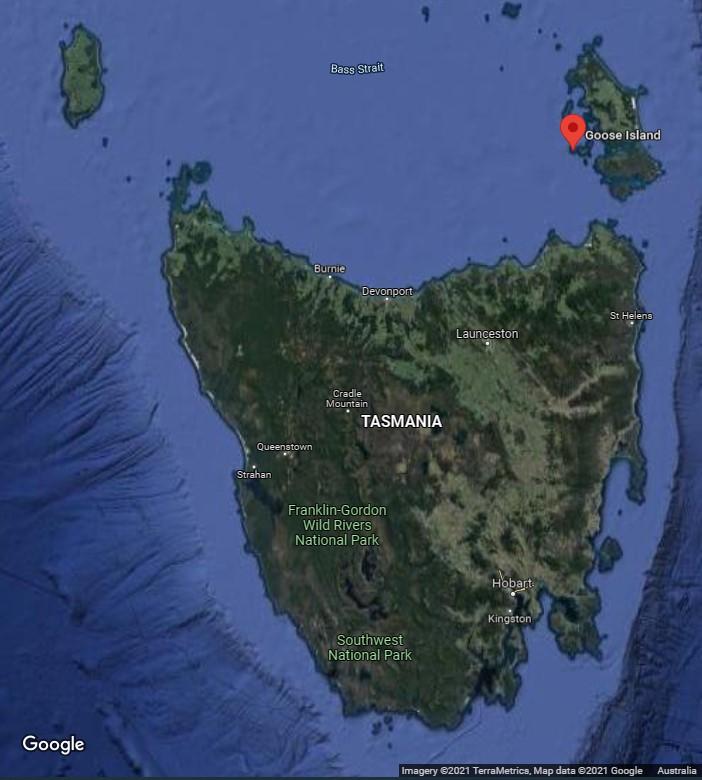 Figure 3. Location of Goose Island within Bass Strait (Imagery: ©2021 TerraMetrics, Map data ©2021 Google)
Figure 3. Location of Goose Island within Bass Strait (Imagery: ©2021 TerraMetrics, Map data ©2021 Google)
Lighthouse coordinates: 40º 18.7032’S, 147º 48.0810’E
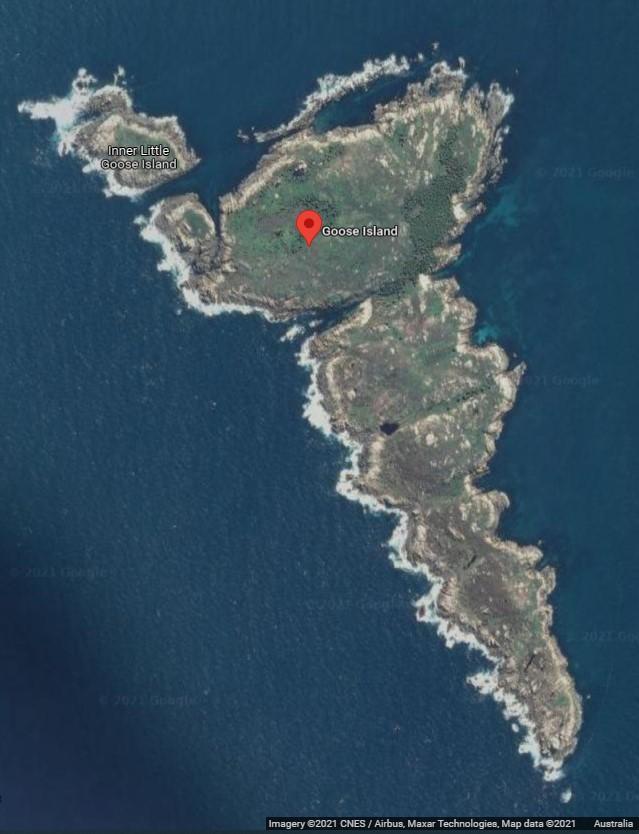 Location of lighthouse on Goose Island (Imagery: ©2021 CNES/Airbus, Maxar Technologies, Map data: ©2021 Google)
Location of lighthouse on Goose Island (Imagery: ©2021 CNES/Airbus, Maxar Technologies, Map data: ©2021 Google)
2.2 Setting and landscape
Goose Island, a low-lying elongated island, is approximately 2.5km in length and, at its widest point, approximately 1km in width. Owing to its granite foundation, Goose Island possesses limited vegetation. A large sheep population was kept on the island during the period the lighthouse was manned, which may have contributed to the limited vegetation growth.
Apart from the lighthouse tower, oil storeroom and helipad, the Island bears no other structure – with exception to some structural remains of the demolished lightkeepers’ cottages, tramway and small lighthouse graveyard.
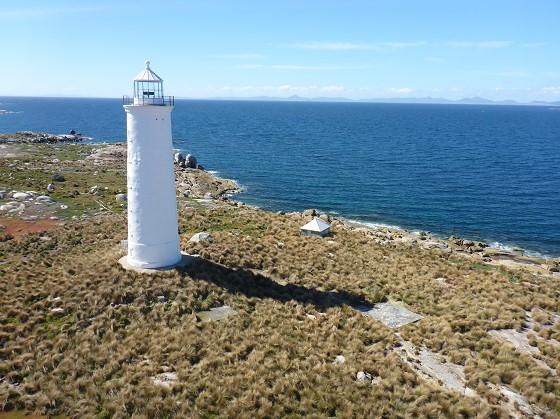 Figure 5. View of Goose Island Lighthouse and surrounds (Source: AMSA, 2018)
Figure 5. View of Goose Island Lighthouse and surrounds (Source: AMSA, 2018)
Fauna and flora
Goose Island contains a select abundance of fauna and flora owing to its isolated position in Bass Strait. Coastal birds colonies, particularly little penguin and short-tailed shearwater, have been recorded on the island.5
Within the larger setting of the Furneaux Group Islands, white-bellied sea-eagles, terns, and hooded plover ‘hot spots’ have been identified.6 The Furneaux Group Islands have also been identified as containing a small number of rare faunal species:
- Tornatellinops jacksonensis (snail)
- Parvotettix rangaensis (Ranga cave cricket)
- Platyzosteria insulae (Fisher Island cockroach)
At the time this plan was written, a Biosecurity Plan for the Furneaux Group Islands was being developed. Their findings will be included in an updated version of this plan.
2.3 Lease and ownership
AMSA leases the Goose Island Lighthouse from the Minister administering the National Parks and Wildlife Act 1970 (TAS), and this lease is managed by the Tasmanian Parks and Wildlife Service (TPWS).
The AMSA lease consists of one parcel of land:
- Lot 1: Lighthouse tower (1,024m2)
The current lease commenced on 1 May 1998 and includes the option to renew for an additional 25 years.
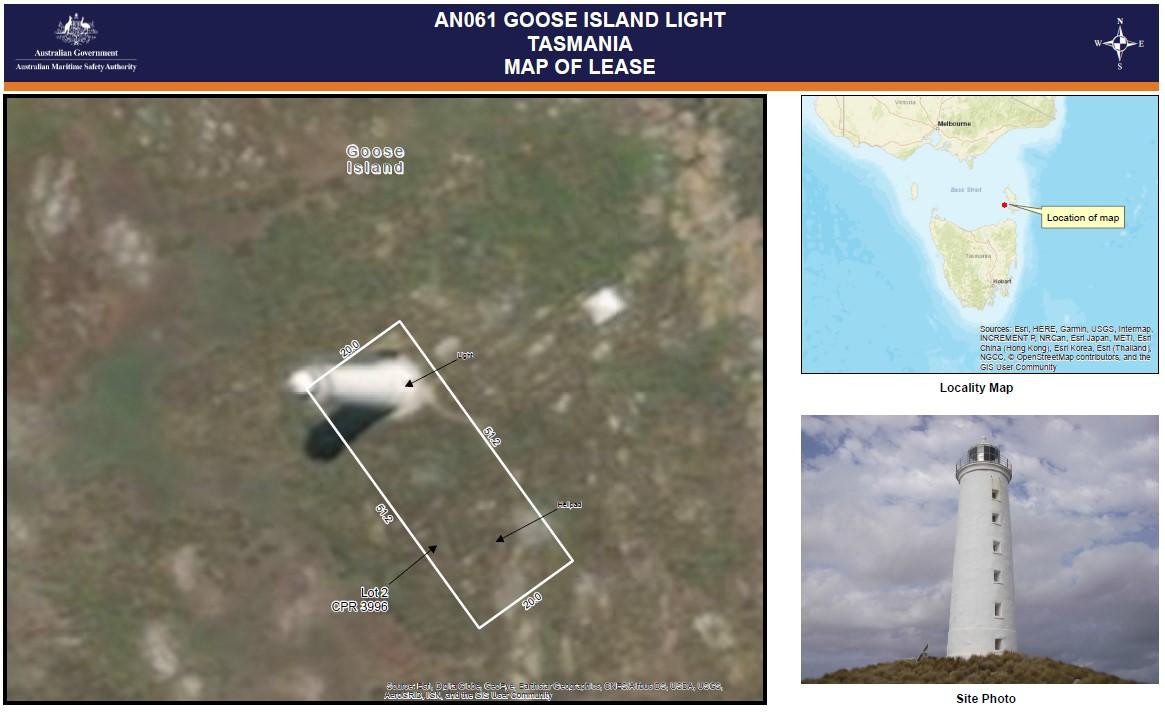 Figure 6. Goose Island Lightstation 2018 Map of Lease (Esri, DigitalGlobe, GeoEye, Earthstar Geographics, CNES/Airbus DS, USDA, USGS, AeroGRID, IGN, and the GIS User Community)
Figure 6. Goose Island Lightstation 2018 Map of Lease (Esri, DigitalGlobe, GeoEye, Earthstar Geographics, CNES/Airbus DS, USDA, USGS, AeroGRID, IGN, and the GIS User Community)
2.4 Access
Goose Island can be accessed by helicopter and boat – boat landing is enabled on the sandy beaches of its north eastern coastline. Visitors are required to walk the distance to the lighthouse (minimal path visibility). Access inside the lighthouse is restricted to authorised personnel only.
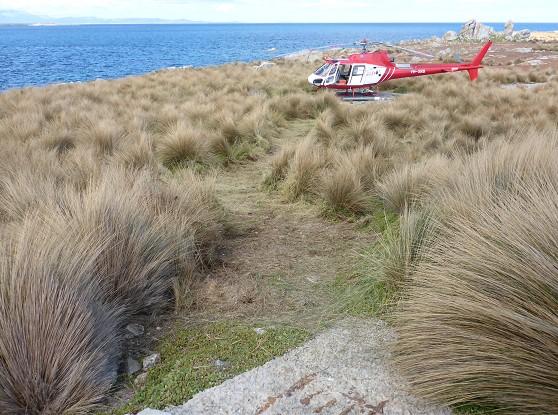 Figure 7. View of path from lighthouse tower to helipad (Source: AMSA, 2018)
Figure 7. View of path from lighthouse tower to helipad (Source: AMSA, 2018)
2.5 Listings
The table below details the various heritage listings of the Goose Island Lightstation.
Register | ID |
Commonwealth Heritage List | 1055647 |
Register for the National Estate | 1028698 |
Tasmanian Heritage Register | 106849 |
______________________________________________________________________________________________
Footnote
9 Tasmanian heritage register, Goose Island Historic Precinct, Heritage Tasmania